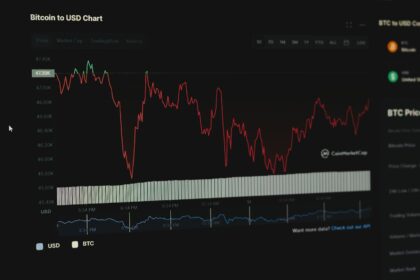The network maintains a pool where all unconfirmed transactions line up before being added to a block. This queue serves as a buffer zone, holding operations that are pending validation and inclusion. Each entry awaits its turn based on several factors, including the fee attached and the priority assigned by miners.
Fees play a critical role in determining how quickly an operation moves through this waiting list. Higher fees typically result in faster processing because miners prioritize entries that offer greater rewards. Transactions with lower fees might stay longer in this staging area, especially during times of heavy demand.
By tracking this collection of pending entries, users can estimate confirmation times and adjust their fee strategy accordingly. Understanding this system helps anyone looking to optimize their transaction’s speed without overpaying. It’s essentially a dynamic lineup where each item waits patiently for its chance to be confirmed on the blockchain.
Understanding the Transaction Queue: How Pending Requests Are Managed
The transaction queue in blockchain networks acts as a temporary holding zone for requests that have not yet been confirmed by miners or validators. When users submit operations, these items enter this buffer space, where they remain until included in a new block. The system prioritizes entries based on associated fees, ensuring that those with higher compensation are processed faster. This mechanism balances network load and prevents congestion by organizing requests efficiently.
Each item’s position in the queue depends largely on its fee rate relative to others. Miners select from this pool of pending entries, favoring those offering greater incentives. As a result, during periods of high activity, transactions with lower fees might experience delays or extended retention times before confirmation. Understanding how this prioritization works can help users optimize their submission strategies to achieve quicker inclusion.
Technical Insights into Priority and Fee Structures
Fee rates act as the main determinant for priority within the waiting list. Networks like Bitcoin use satoshis per byte metrics to rank these submissions, encouraging users to attach adequate compensation for faster processing. For example, during peak demand phases such as market surges or significant events, minimum acceptable fees rise sharply–sometimes doubling or tripling compared to quieter periods.
This dynamic fee environment means participants must monitor real-time conditions and adjust accordingly. Tools exist that display current fee recommendations based on mempool size and transaction throughput estimates. By referencing these data points, one can avoid unnecessary delays or overpayment while ensuring timely confirmation.
Nodes maintain separate but synchronized copies of this transient dataset, constantly updating it as new items arrive and existing ones finalize into blocks. Occasionally, if the cumulative load exceeds protocol limits or node capacity, low-fee entries may be dropped to prevent overflow–a process known as eviction. Such mechanisms maintain network health and integrity under stress.
- High-priority entries: Typically include larger fees and are confirmed within the next few blocks.
- Medium-priority entries: May wait several blocks depending on current traffic.
- Low-priority entries: Risk being delayed significantly or removed if congestion persists.
An everyday analogy compares this system to a supermarket checkout line where customers willing to pay more for express service jump ahead, while others wait longer in standard queues. Similarly, understanding fee dynamics helps users navigate transaction backlogs effectively.
This structured approach ensures fair treatment based on economic incentives while maintaining throughput efficiency across decentralized systems. Users benefit from adjusting their offers according to prevailing conditions rather than fixed values applied blindly.
The queuing mechanism also provides transparency by enabling anyone running a full node to observe pending submissions awaiting inclusion. This visibility fosters trust and allows stakeholders to predict transaction timelines better by analyzing backlog sizes and fee distributions over time.
How Mempool Stores Transactions
Every new operation broadcast to a blockchain network first enters a specialized queue known as the mempool. This collection point temporarily holds unconfirmed operations before miners include them in blocks. The structure of this waiting list enables efficient prioritization, ensuring that more valuable or urgent entries are processed sooner.
The storage mechanism within this buffer relies heavily on a system of sorting based on fees attached to each operation. Higher fees signal greater incentive for miners, who naturally prioritize these entries to maximize their rewards. As a result, transactions with minimal compensation often remain longer in this pending state, awaiting inclusion.
Queue Management and Prioritization
Nodes maintain the mempool as an organized queue where each incoming entry is verified for validity and then placed according to its fee-per-byte ratio or other priority metrics specific to the blockchain protocol. For instance, Bitcoin nodes calculate priority using a combination of fee rate and transaction size, dynamically adjusting placement to optimize block space utilization.
This system creates a dynamic waiting line where entries compete for limited block capacity. During periods of high network congestion, such as market surges or major events, the backlog expands significantly. Miners tend to select operations offering higher remuneration first, which can delay low-fee activities considerably.
- Fee-based sorting ensures economic incentives drive transaction inclusion speed.
- Size constraints influence how many operations fit into each block.
- Entries exceeding node memory limits may be dropped or deprioritized.
Understanding this prioritization helps users decide appropriate fees when submitting operations to avoid prolonged delays in confirmation times.
Technical Handling and Storage Limits
The mempool is not infinite; it operates within resource constraints defined by available RAM and configured node policies. When inflows surpass these limits, nodes apply eviction strategies targeting lower-priority items first–often those with minimal fees or outdated timestamps–to maintain operational efficiency.
A practical example occurred during peak transaction volumes in late 2020 when Ethereum’s mempool ballooned dramatically due to DeFi activity spikes. Users submitting low gas prices experienced extended wait times or even removal from some nodes’ queues before eventual confirmation once conditions normalized.
User Strategies for Efficient Inclusion
To enhance chances of swift processing through the queue, users should attach competitive fees aligned with current network demand levels. Fee estimation tools integrated into most wallet applications analyze recent block data and suggest optimal values that balance cost-efficiency with confirmation speed.
An illustrative scenario involves sending funds during network peaks: submitting with default minimal fees could result in hours-long delays, whereas increasing compensation by even a few satoshis per byte significantly improves position within the pending list. Adjusting fee parameters accordingly empowers senders to navigate fluctuating congestion effectively.
Mempool Synchronization Across Nodes
The transaction pool is synchronized among full nodes via peer-to-peer communication protocols that propagate newly received entries promptly throughout the decentralized network. This ensures consistent visibility of outstanding operations across participants, preventing double-spending attempts and facilitating coherent consensus building during block assembly.
This synchronization process also means that when one node drops certain low-fee items due to capacity pressure, other nodes might still retain them until expiration occurs globally. Consequently, mempool content varies slightly between nodes but remains largely uniform regarding high-priority pending operations prioritized by miner selection algorithms.
Why Transactions Stay Pending
The primary reason that operations remain unconfirmed lies in the limited capacity of the network’s temporary storage space, where unprocessed data accumulates. This buffer zone, known as the mempool, functions as a staging ground for submissions awaiting inclusion into blocks. When demand exceeds supply, these entries form a queue, and their processing order depends heavily on associated incentives.
Each entry carries a fee that signals its urgency to validators. Miners or block producers prioritize items offering higher compensation per byte of data because it increases their rewards. Consequently, submissions with lower fees often face extended delays until congestion eases or miners allocate sufficient resources to handle them.
Fee Dynamics and Priority Mechanisms
Fees act as economic levers within this waiting system. During periods of high activity–such as network surges caused by popular decentralized applications or market volatility–the backlog grows significantly. For example, during peak Bitcoin transaction times, average fees can spike dramatically, pushing smaller payments to linger longer in the queue.
This prioritization model creates a tiered environment: transactions with competitive fees enter new blocks faster, whereas others accumulate near the bottom of the pool. Some wallets offer dynamic fee recommendations based on current network conditions to improve confirmation speed without overpaying.
Technical Factors Influencing Delays
Beyond fees and priority settings, certain technical attributes affect processing times. Complex operations involving multiple inputs require more computational effort and larger block space, potentially reducing throughput. Additionally, nodes enforce policies on maximum mempool size; when thresholds are exceeded, low-fee entries may be dropped or deprioritized.
An illustrative case occurred during Ethereum’s DeFi boom when intricate contract interactions resulted in increased gas prices and prolonged pending states for simpler transfers with insufficient gas fees. Network upgrades addressing scalability aim to alleviate such bottlenecks but do not eliminate fee-based queuing entirely.
Strategies to Reduce Confirmation Time
- Increase Fee Offers: Adjusting fees upward aligns incentives with validators’ priorities and expedites inclusion.
- Use Dynamic Fee Estimators: Many wallet providers incorporate algorithms that suggest appropriate compensation levels based on real-time mempool status.
- Avoid Congested Periods: Timing submissions during lower traffic intervals reduces competition for block space.
- Leverage Layer-2 Solutions: Off-chain protocols enable faster settlement while lessening mainnet load and decreasing overall queuing times.
Understanding these mechanisms empowers users to better navigate blockchain networks and manage expectations regarding operation finality effectively.
Mempool Size Impact on Fees
High demand in the pending transaction queue directly affects the fee levels required for swift confirmation. When the mempool expands significantly, miners prioritize operations offering higher rewards, causing fees to rise for those seeking timely processing. Conversely, a smaller backlog often results in lower average fees since miners have fewer transactions to choose from.
Understanding the relationship between mempool volume and fee dynamics is essential for anyone interacting with blockchain networks. The mempool acts as a staging ground where all unconfirmed transactions reside before inclusion in a block. Its size fluctuates based on network activity, influencing how much participants must pay to avoid prolonged delays.
Fee Bidding and Queue Congestion
The fee market operates as an auction where users compete to have their transfers included sooner by attaching higher incentives. When the mempool contains many pending entries, this competition intensifies, driving up median fees substantially. For example, during peak periods on Bitcoin or Ethereum, fees can spike from a few cents to several dollars or even tens of dollars per operation.
This escalation stems from limited block space juxtaposed against surging requests. Users setting low fees risk their transactions remaining queued indefinitely or dropped after expiration thresholds. Meanwhile, those willing to increase payments experience faster confirmations by moving ahead in the priority queue maintained by miners’ selection algorithms.
Case Study: Fee Fluctuations During Network Stress
- In January 2021, Ethereum’s mempool swelled dramatically due to decentralized finance (DeFi) activity and NFT launches.
- Average gas prices soared beyond 200 Gwei, compared to typical values near 20-40 Gwei during normal conditions.
- Users who accepted higher gas fees secured block inclusion within minutes; others faced hours-long delays or eventual eviction from the waiting pool.
This example underscores how transaction backlogs compel network participants to adjust fee strategies dynamically rather than relying on fixed rates. Monitoring mempool size offers practical insight into current congestion levels and expected costs.
Strategies for Managing Fee Expenditure
Adapting submission timing and choosing appropriate fee tiers based on real-time mempool metrics can optimize expenses without sacrificing processing speed unnecessarily. Tools analyzing queue depth and pending operation statistics provide valuable guidance for selecting competitive yet cost-effective incentives.
For instance:
- A user submitting data during low congestion windows may attach minimal fees while still achieving fast inclusion.
- During spikes, increasing offered remuneration proportionally prevents excessive delays caused by large backlogs.
- Some wallets implement dynamic fee estimation algorithms that automatically adjust payments according to observed mempool snapshots and historical confirmation trends.
Technical Considerations on Mempool Management
The architecture supporting pending transaction pools varies across blockchain implementations but generally includes mechanisms limiting total capacity to prevent overloads. Once limits are reached, lower-fee operations get discarded first–this prioritization reinforces the upward pressure on minimum required fees during high utilization phases.
Conclusion: Navigating Fees Through Mempool Awareness
A firm grasp of how pending queue sizes influence fee markets empowers users to manage costs effectively while maintaining desired service levels. Observing live network conditions through explorer tools or integrated wallet features facilitates informed decisions about when and how much incentive to attach for prompt acceptance into blocks.
This understanding bridges technical concepts with everyday usability, enabling confident participation regardless of one’s familiarity level with blockchain mechanics. Approaching fee determination as a responsive process aligned with current supply-demand balances yields more predictable outcomes amid fluctuating network states.
Conclusion: Efficient Clearing of Pending Transactions in the Queue
Clearing the backlog of pending operations in the queue depends heavily on fee strategies and priority mechanisms embedded within blockchain protocols. Miners typically select entries offering higher compensation first, which means that those with minimal incentives may remain stalled in this temporary holding area for extended periods. Understanding this dynamic is essential for participants aiming to optimize confirmation times and reduce uncertainty.
Looking forward, innovations such as dynamic fee adjustment algorithms and tiered priority queues promise to refine how these waiting elements are processed. For example, implementations like Ethereum’s EIP-1559 have introduced base fees that adapt according to network congestion, effectively smoothing fluctuations in clearance speed. Similarly, layer-two solutions aim to alleviate pressure by offloading certain operations outside the main processing queue, enhancing throughput while maintaining security standards.
Key Insights and Future Implications
- Fee-driven prioritization remains the primary factor influencing selection order from the pool of pending entries.
- The unpredictability of confirmation times can be mitigated through strategic fee bidding and monitoring current queue states.
- Advanced mempool management techniques are evolving to provide more granular control over transaction inclusion criteria.
- Emerging protocol upgrades will likely introduce smarter queuing systems that balance user cost with network efficiency more effectively.
By grasping these technical nuances, users can better navigate the complexities of blockchain interaction, ensuring smoother transaction finality. As networks continue refining their handling of these temporary repositories, both reliability and scalability stand to benefit–empowering broader adoption and enhanced user experience without sacrificing decentralization principles.





